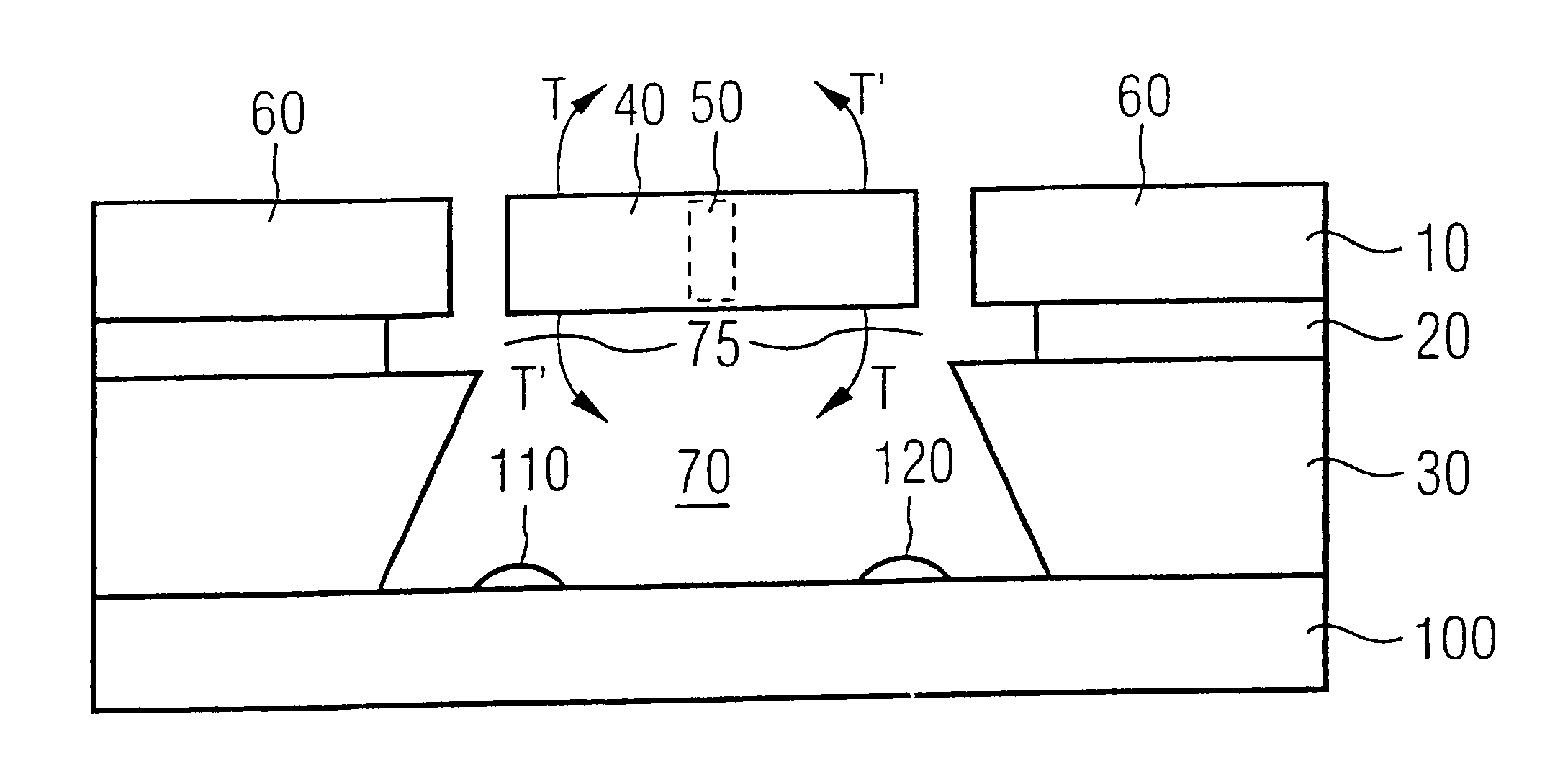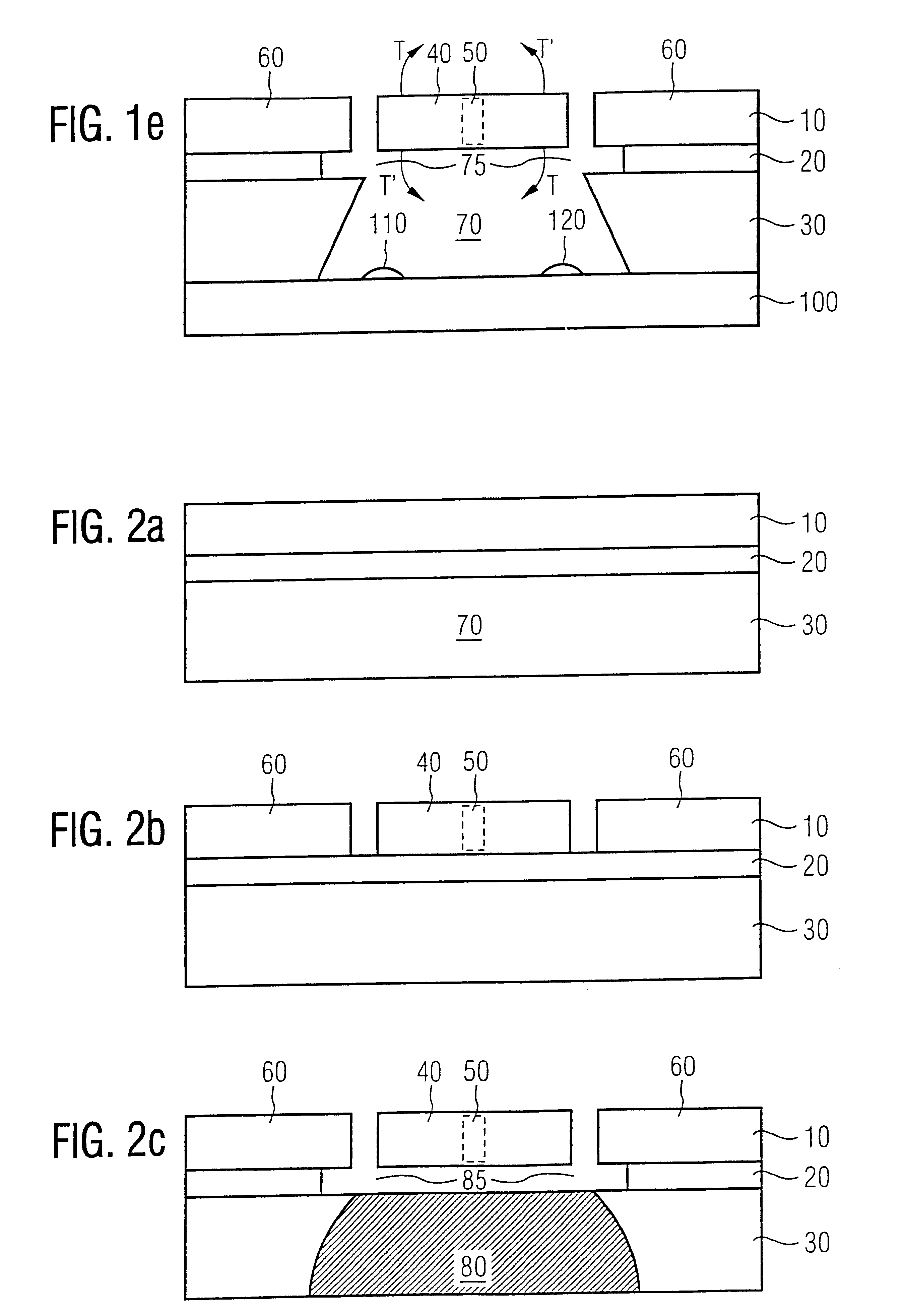Method for manufacturing a micromechanical device
a micromechanical device and manufacturing method technology, applied in the field of micromechanical vibrating mirrors, can solve the problems of variable mirror properties, unpractical deep etching >100 .mu.m., and cost reasons
- Summary
- Abstract
- Description
- Claims
- Application Information
AI Technical Summary
Benefits of technology
Problems solved by technology
Method used
Image
Examples
first embodiment
FIG. 1a-1e show a cross-sectional representation of the process steps according to the method of the present invention for manufacturing a vibrating mirror.
FIG. 1a shows an SOI wafer structure having an SOI layer 10 which is provided on a silicon substrate layer 30, with the interposition of an insulating layer 20 (e.g., an oxide layer).
According to FIG. 1b, silicon substrate layer 30 is etched through up to insulating layer 20 by wet etching. This is advantageously done with TMAH, KOH, and is carried out with an SOI wafer that is protected from etching on the front side and is masked on the back surface for producing a cavity region 70.
According to FIG. 1c, SOI layer 10 is thereupon etched through to insulating layer 20 to produce an island region 40, lying on insulating layer 20, which is joined to region 60 of SOI layer 10 surrounding island region 40 by way of two connecting webs 50 (see FIG. 3). The etching is carried out by a suitable dry-etching method such as plasma trenchin...
second embodiment
FIGS. 2a-2e show a cross-sectional representation of the process steps according to the method of the present invention for manufacturing a vibrating mirror.
FIG. 2a shows the same representation as FIG. 1a, thus a customary SOI structure.
In contrast to the first embodiment, according to FIG. 2b, first of all, SOI layer 10 is etched up to insulating layer 20 to produce island region 40 corresponding to the vibrating mirror which is joined by way of the two connecting webs 50 to region 60 of the first layer surrounding island region 40. This is done as in the first embodiment by a suitable dry etching method with high lateral resolution such as plasma trenching.
According to FIG. 2c, anodization is carried out when working with a back surface that is suitably masked with gold, for example, it being possible to detect an end point by a sudden voltage change in response to the complete anodization of the backside cavity region 80 to be formed. An electrolytic contacting of the highly dop...
PUM
| Property | Measurement | Unit |
|---|---|---|
| structure | aaaaa | aaaaa |
| anisotropic | aaaaa | aaaaa |
| metallic | aaaaa | aaaaa |
Abstract
Description
Claims
Application Information
 Login to View More
Login to View More - R&D
- Intellectual Property
- Life Sciences
- Materials
- Tech Scout
- Unparalleled Data Quality
- Higher Quality Content
- 60% Fewer Hallucinations
Browse by: Latest US Patents, China's latest patents, Technical Efficacy Thesaurus, Application Domain, Technology Topic, Popular Technical Reports.
© 2025 PatSnap. All rights reserved.Legal|Privacy policy|Modern Slavery Act Transparency Statement|Sitemap|About US| Contact US: help@patsnap.com



